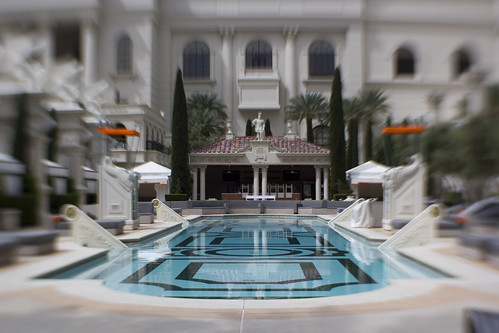There seems to be a new (well, maybe “new-ish” to be more precise) trend in photo gear as of late. It’s what I like to call “the walkabout camera.”
Yes, now I know cameras have been undergoing a lot of changes recently. We have the mirrorless cameras rising in popularity (also, the so-called EVIL cameras or “electronic viewfinder/interchangeable lens” cameras.) These type of cameras are small and compact, lightweight and relatively easy to stash away, making them quite popular, not to mention the megapixel wars are (thankfully!) behind us now, so there’s not much in terms of sacrifice of image quality when using one of these little beasts.
For a while, it seemed like the smaller-ish cameras would be relegated to the ranks of the semi-pros; that anybody who was really “serious” about photography could not actually use one. Perhaps the pros didn’t quite trust the image quality just yet or perhaps the little cameras just suffered from a lack of information (or lack of publicity) but the pro circuit were a bit slow to click with these new cameras. It can be expensive to jump headfirst into a new rig and not everybody is willing to put the time, effort, and money into that, especially not established professional image makers who don’t want to risk “rocking the boat” so to speak. Not anymore.
For starters, what I’m seeing is that there are a lot of pros who seriously want to cut back on the gear. Seriously. This is not unique or a new event really, as there have always been pros who travel heavily and, let’s face it, lugging around a big, heavy rig is no fun. But now I’m seeing (and talking to) a lot of pros, high-end pros, wanting to make the switch to the “one small camera, one small lens” model and desperately. Gone are the days of wanting to get a big rig to look impressive, no, now everybody seems to want to go small. It’s actually happening.
Combine this with the Instagram/Hipstamatic phase and you have a recipe for many smaller cameras in the works. Fuji has recently introduced a line of what I like to cal “professional Instagram” type cameras-they are capable of shooting in square format, they offer on board filters for pumped up colors (some even have exposure compensation built in, so you can do things like shoot a half stop under all of the time, in order to “punch up” the colors a bit more) and these cameras are small and lightweight while not sacrificing in the megapixel counts or image quality. I believe they offer up an 18 megapixel model and, though it comes at a steep price entry point, it’s one heck of a little beast and quite suitable for any pros wanting to get that “Instagram look” while still being able to Photoshop the results or keep themselves within the confines of an established professional workflow, not to mention have full control over things like exposure settings (which the iPhone is lacking.)
I saw this on my recent location work in Vegas. There was a photographer there who had one of these nice little beasts and we all kept admiring not only how small and light the camera was (he could just throw it on over his shoulder and it hung at hip-level, didn’t look like much, was light and easy to carry) but how nice the images were, even in situations like low light. He was getting nice punched up colors in a square format that looked sort of “Instagram-like” only offered up a higher megapixel count and a more polished, professional grade image, thanks in part to him being able to control all of the traditional settings, like shutter speed, ISO, and the like. (Not trying to insult the Instagram crowd here, just pointing out that the iPhone is still, in fact, an 8 megapixel little gem and the lens quality is not what a pro might expect, nor does it provide for those interchangeable lenses we love so much, not to mention it offers little in the form of controls for things like shutter speed or the aperture settings we’ve grown so used to setting over the years.)
Even Canon now is getting into the fray, with their recent release of the Canon EOS SL1, a camera they are billing as “the world’s smallest and lightest digital SLR camera.” In the past, they were touting the latest SLR features making the cameras rugged and ready, they actually liked the large bodies and pros flocked to the biggest full frame cameras. Heck, even medium format digital cameras had been on a rise, as professionals were looking to print large, go big, and get the best in image quality. Now it seems like these “walkabout cameras” are here to stay. The ads are all touting “small and lightweight” while allowing you to change lenses and maintain the image quality you’re so used to getting out of a Canon.
Another trend I seem to see here is that, in the past, professionals opted for a “backup body.” I do this all the time as well-have a backup Canon in case my big rig dies. In my case, I keep a Canon EOS Rebel around for the cause and, as you can see in this image, I use it as a Lensbaby camera, not to mention a backup in case my trusty Canon 5D Mark II falls in the drink (or succumbs to some other undesirable fate.) A lot of photographers, myself included, looked for a backup body to be capable of using some (maybe not even all) enses from my main rig, cutting down on the number of lenses we have to carry. This explains why Nikon shooters tend to have another Nikon as a backup while Canon shooters, you guessed it, have a spare Canon lying around (ahem, please do not alert Homeland Security, we’re strictly talking cameras here, folks!)
With the rise of these new “walkabout cameras” I’m seeing a new trend emerge. Just as in the point-and-shoot days, the camera manufacturers that make the best “big rigs” (read Canon, Nikon here, folks) don’t always make the best in “walkabout camera” gear. Makes sense, as they seem to lag behind the curve in offering spiffy new “walkabout camera” features. They concentrate their efforts in research and development into bringing us the next, best, new Canon 5D Mark +1, rather than trying to be all things to all photographers and focusing on a “walkabout camera” as well. This explains why Canons and Nikons are some of the worst point and shoot cameras going (sorry to point out your flaws here, big boys, but the facts do tend to back me up here) and why too Canon and Nikon might not be the best brand to turn to for a “walkabout camera.” Meanwhile, other manufacturers, like Olympus and Fuji have jumped headfirst onto the “walkabout camera” bandwagon, focusing on trying to corner this market before it’s too late and carve out their own niche in the photography world. This consistency in the industry explains why we are now seeing what I like to call “the rise of the walkabout camera” featuring brands like Olympus and Fuji.There now seems to be a host of small, lightweight specialty cameras that offer features a professional photographer is used to seeing (read: aperture, shutter, ISO settings and the like) while not sacrificing image quality or megapixel count, but still coming in a nice, tiny little easy to carry package.
Now, I must admit too that I haven’t been on top of this trend, although I was able to spot it and have been watching it grow for a while now. No, I’ve opted to instead focus on my main (read “big”) rig and keep the Canon Rebel as a spare/Lensbaby/pinhole/whatever camera for a while, as this model was better suited to my needs as a shooter. Even I might change my ways, though, as I’m seeing some of the newer “walkabout cameras” churn out some images I like and looks I want to experiment with for myself. As much as I hate to admit it, I too might be headed into the direction of the “walkabout camera,” especially given the circumstances of my physical limitations. (I have a bad back and sometimes have difficulty walking, making scaling down a rig even more pressing of an issue for me.)
I’m also not stupid either. Photographers flock to cameras that give them results. It’s always been the case, and it always will be the case. As the “walkabout cameras” start to and continue to churn out good results, more and more professional (and, in turn, semi-professional, even serious amateur or slightly studied novice) will start to pick them up as well. It’s a trend that’s only going to grow and continue given the recent circumstances.
So when will I fold and get a “walkabout camera” of my very own? Perhaps only time will tell, although now I must admit they are much more on my radar than previously expected. I’d be curious to hear from you (or anybody) with one of these spiffy new “walkabout cameras.” How do you like it? As a professional, how does it work for you and how does it fit into your workflow? Is it just an extra, added, unneeded brick that proved to be a gimmick or is it an acceptable tool in your quiver? Do please drop me an email and let me know your thoughts on the matter if you are so-inclined.
Until next time…

